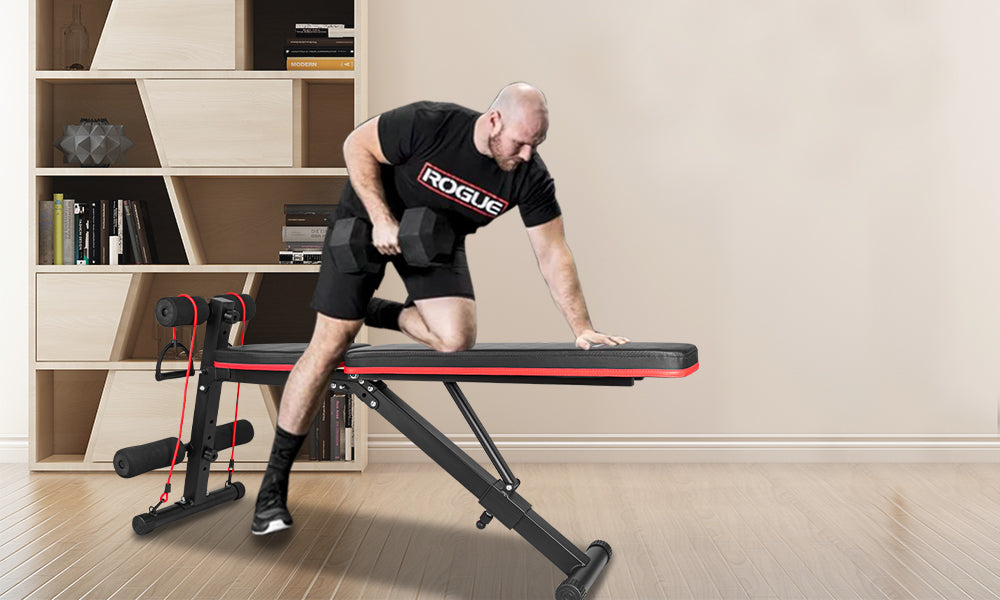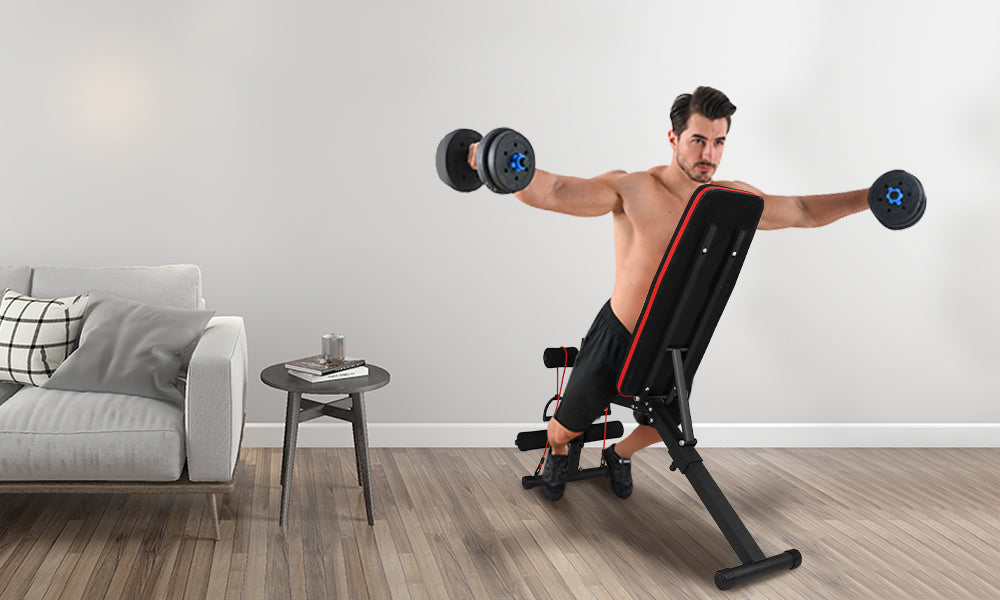Before using the weightlifting bench, you need to adjust the bench.
1.Adjust your bench to the desired inclineBefore deciding to perform a certain exercise, you need to make sure that you adjust your bench to the correct incline to target the muscles you need to exercise. Some movements must be done lying flat to protect your back, while others can be done in many different ways, and you can create a complete exercise based on these changes. Because if it is not handled properly, it can cause injuries and may cause the weightlifting bench to break.
2.Adjust your seat to suit the slope and exercise
On many gym weight bench models, the seat and bench are adjustable. If you are using a Home Fitness Code weight bench, you only need to make sure that your seat is fixed in the correct position. This can make your workout more comfortable. Check the safety pin again to make sure it is firmly supported. In this respect, it is the same as the adjustable decline sit up bench.
3.Decide the weight to use
- Your weightlifting ability will be different for each sport you choose. For example, you will be able to bench press more weight than curl. You also need to decide whether to use a barbell or dumbbells.
- The barbell allows you to lift more weight because it has a stabilizing effect on the barbell. It also ensures that both arms are working on the same level.
- Dumbbells make your stable muscles work harder, thereby strengthening these smaller muscle fibers, but it can cause an imbalance in arm strength.
- When sitting on a bench, you need to pay attention to four contact points throughout the exercise. These four contact points are the points where your body should always be in contact with the bench. These four points are head, shoulders, hips and feet. The head should always be in contact with the bench, and lifting it from the bench can cause neck pain. The shoulders should also feel the back of the bench.
- The buttocks are also important to stay in contact with the back of the bench. If the head, shoulders, and hips are pressed against the end of the bench, this should create a natural arch in the lower back. This will build your core muscles during your workout, which is also the goal of most training.
- Finally, you need to make sure that your feet stay on the floor. This will ensure that you won't swing or fall off the bench during difficult lifting.
Before doing any exercises, make sure you understand the sequence. Before mastering these movements, don't let yourself be too hard. You should start with a light weight, and then gradually increase the weight and difficulty.
After adjusting the seat, you can start training.
Flat bench pressThis exercise is very suitable for training our mid-chest. The flat bench press is one of the first choices for weightlifting bench exercises. Doing these will also help build muscles throughout the body. You can use a flat or adjustable weight bench for these exercises.
How to do it: Arch your back and make sure your feet are firmly on the floor. Your elbows should be at a 45-degree angle to your body, slightly retracted. This will help you protect your shoulder joints when lifting heavier weights. When the barbell is tightened, it should be directly above your line of sight. Lift the barbell and place it in front of your chest, make the barbell slightly slanted forward, and then push it back to the original position, repeat 15 times in a group.
Concentrated curl
Grab a hex dumbbell and a weight bench and you can start. These are great for exercising your biceps, and they are also easy to do at home.
How to do it: Sit on one side of a flat weight bench with your feet spread out a certain width so that your thighs are at a 5 degree angle to your body. Lower your right arm and press it into the inside of your right leg to lock it in place. Curl up the hand dumbbell and put it back in place. Repeat 15 times for a group.
One-arm dumbbell rowing
This action can exercise both the latissimus dorsi and deltoid muscles at the same time. To do this, you need to keep your back straight, place your knees on the bench and swipe up from the side of the bench.
How to do it: Stand on the side of a weight training bench and place the knee closest to the bench on the cushion. Lean forward and place your hands on the same side of the bench. Your back is straight. Place the dumbbell on the other arm and lift the dumbbell upward so that your elbow meets your side and the back of your arm is parallel to your back. Repeat 15 times for a group.

Incline bench press
These are very suitable for exercising your upper chest and muscles. You need to make sure that the seat is at a 90-degree angle to the bench. This will allow you to exercise your upper chest and lift heavy objects without slipping off the end of the bench.
How to do it: Arch your back and squeeze your shoulders together so that your back will be nice and tight before you lean back. This will provide you with a solid foundation. Place your feet firmly on the ground on both sides of the bench. When you untie the shelf, the barbell should be directly above your line of sight. Keep your elbows directly under your wrists and make your elbows at a 45-degree angle to your body. Place the barbell down on the upper part of your chest muscles, and then push up again. Repeat 15 times for a group.
Reverse flight
These are great for exercising your back and biceps. You need to assist with dumbbells to exercise. Remember to keep your spine straight, which means keeping your neck and back in a straight line. Make sure your shoulders stay tight and push back so that your arms don't sag.
How to do it: You want your weight bench to be at a 45-degree angle to the backrest, and the seat to be at a 90-degree angle to the backrest. Lie flat on the bench backwards and firmly grasp the floor with your toes. Hold a dumbbell in each hand, extend your arms, lift them up and out, and when you reach the top, squeeze your shoulder blades together for the full number of repetitions, and then put your arms back in place.

Dumbbell chest press
Dumbbell chest press can avoid body imbalance. The main problem with dumbbells is that you need to be consistent with your movements to make progress. Therefore, it is very important to focus on your actions to make sure they are accurate every time.
How to do it: It is very similar to the incline bench press setting. Adjust the bench and seat at a 45-degree angle to provide support. Hold a dumbbell in each hand, arch your back, and step on your feet firmly on the ground. Keep your shoulders close together, while placing your elbows directly under your wrists. With dumbbell chest presses, you can make your elbows a little wider so that they are at a 90-degree angle to your body. This will help to exercise your upper chest and get a full stretch.
Seated Incline Dumbbell Biceps Curl
Leaning your bench but not sitting upright can help you fully stretch your pectoral muscles.
How to do it: Sit the bench backwards so that the backrest is at a small angle. When you push your arms back, your chest will also stretch back. If not, please lower the backrest a bit more. Sit back on the weight bench, open your chest, and let your feet press firmly on the floor. Push your elbows back, roll your forearms up into a biceps curl, keeping your fingers pointing towards the ceiling.
Down bench press
This is a good exercise to train your upper chest and your shoulders and triceps. Lower your weightlifting bench so that it tilts down slightly, and then place it slightly forward of the shelf than during the flat bench press.
How to do it: Lie on your back on a bench with your back arched and your chest open. The barbell should be located directly above the lower back of the chest. Keep the barbell straight down, keeping your wrists straight, and your elbows at a 45-degree angle to your body. Push up and repeat.


